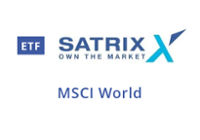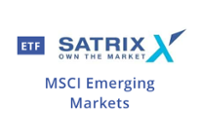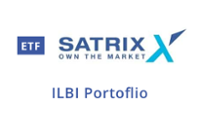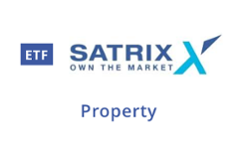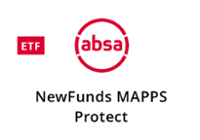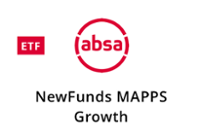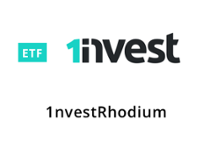Intellidex Reviews March 2020: ETF Picks
Every month the investment gurus at Intellidex scan through the markets to deliver their selection of locally-listed Exchange Traded Funds. In this note, you will find that the researchers have classified their selections according to six broad categories, namely: domestic, international, bonds & cash, dividend or income-focused, multi-asset, and commodities. Catch the insights directly from the Intellidex team below.
ETF Strategy
The are no clear macroeconomic catalysts to lift risks assets and investor sentiment on the Johannesburg Stock Exchange. We are likely to see further flight of foreign capital. As a result, we remain in favour of quality, low volatility and defensive equity strategies and bonds.
We also think a good argument can be made in favour of value strategies given the downward re-rating of the JSE over the past few months. We encourage offshore exposure to hedge against rand weakness and the ailing South African economy. However, with the offshore outlook also muddied, we emphasise diversification across developed markets.
Now for their pick of ETFs
Domestic:
We maintain the CoreShares Scientific Beta Multifactor Index ETF as our pick for investors seeking exposure to local equities. The fund fits our mould of a good investment philosophy. Its methodology tends to favour quality stocks which are highly profitable – exactly what we think investors need under prevailing economic conditions. It also considers valuations (price multiples) of the counters in its selection process, which we think is important. The fund also has a decent amount of assets under its management.
The only gripe we have with the CoreShares Scientific Beta Multifactor Index ETF is its high total expense ratio of 0.45%. There are extensions to this core local equity exposure that can be added in a tactical sense as a satellite fund. The NewFunds Equity Momentum fund (down 8.8% in February) which follows one of the five factor investing strategies widely regarded in finance literature.
Global empirical evidence in the last decade shows that momentum investing on average was the second-best investing strategy – behind low-volatility and ahead of its three cousins: value, size and quality. To its credit, the fund has performed better than other JSE broad equity funds over the past five years. The data also suggest investors should consider investing in various volatility-weighted funds on the JSE. However, previous performance is not an indication of future performance.
International (Developed Markets):
We maintain our exposure to the broad-based Satrix MSCI World Equity Feeder ETF, which is dominated by US equities. We think US stocks are more resilient than other developed market equities during turbulence, given the relatively stronger US economy. We are, however, cognisant of the elevated US valuations relative to other developed markets. The Satrix MSCI World Equity Feeder ETF fell 6.3% in February. A good alternative, though, is the Ashburton Global 1200 Equity ETF (down 6.9%) but it has a higher total expense ratio. Other more focused international equity themes include property, dividend and technology funds. These are worth considering for tactical or other investor-specific reasons.
International (Developing Markets):
For developing market exposure, we choose the Satrix MSCI Emerging Markets ETF (-2.5%). It invests in a wide range of emerging economies including some of the fastest-growing markets such as China and India. The Cloud Atlas AMI Big50 (-2.4%), which focuses on African equities, can be used as a satellite fund to the core Satrix MSCI Emerging Markets fund. However, the Cloud Atlas AMI Big50 ETF has been extremely volatile since its listing on the JSE, which is somewhat expected given its frontier status.
Fixed income and Cash:
Fixed income securities should find their way into a well-diversified portfolio due to their risk-diversification attributes. If you are investing for a short period, usually less than a year, then the NewFunds TRACI (up 0.6%) is a natural choice because it is least sensitive to adverse interest rate movements. For a longer investment horizon, protecting your investment against inflation is paramount.
We maintain our choice of the Satrix ILBI ETF (+0.9%), which has the lowest expense ratio in this category. Furthermore, nominal bonds add a unique risk-return dimension that differs from inflation-linked bonds and improves overall portfolio performance. The only option for local nominal bonds is the Newfunds GOVI ETF (-0.5%).
As with equities, investors also need to diversify their bond portfolios internationally. Our choice is the 1nvest Global Bond ETF (+5.7%), which tracks investment-grade sovereign bonds mostly issued by the US, UK, Japan and selected European countries. The 1nvest Global Bond ETF has the lowest TER in this category.
Dividend or income funds:
If you rely on your investment income for day-to-day expenses you may want to allocate a portion of your portfolio to ETFs that have a high distribution ratio. Property funds tend to have even higher pay-out ratios. Our pick here is the Satrix Property ETF (-15.8%) which has a brilliant diversification approach.
For foreign property funds we like the Sygnia Itrix Global Property ETF (-4.3%). It has an aggressively low total expense ratio (TER) of 0.19% that significantly undercuts its competitors, whose charges range from 0.34% to 0.52%.
Diversified funds:
If you find the process of diversifying your portfolio daunting, two ETFs can do it for you. They combine equities and bonds to produce a diversified portfolio for two investor archetypes with differing risk appetites:
Mapps Protect is more conservative, usually suitable for older savers.
Mapps Growth suits investors with a long-term horizon.
They were down 12% and 5.9% respectively.
Commodities:
Adding a commodity ETF to your portfolio improves diversification because commodities march to the beat of their own drum – they are not in sync with broader markets. Traditionally, gold is the preferred addition to an investor’s portfolio because over longer periods it has shown to be the least correlated with other assets. However, our preference based on our medium-term outlook is between rhodium and palladium.
The new vehicle emission laws in Europe and China are driving demand for both commodities and this is expected to continue in the foreseeable future. We are slightly more inclined towards rhodium because it is scarcer, with lower extraction rates from PGM ore. The primary production of rhodium is somewhat inelastic and is expected to decline moderate moderately over the medium term. Palladium funds gained northwards of 19.7% during February.
Intellidex Reviews
March 2020: in the news
There's plenty more from where that came from. The team at Intellidex have more insights for the month of March. To see more in-depth analysis and market insights (global and local), check out the full note here.
Background: Exchange-traded funds (ETFs)
Exchange-traded funds (ETFs) are passively managed investment funds that track the performance of a basket of pre-determined assets. They are traded the same way as shares and the main difference is that whereas one share gives exposure to one company, an ETF gives exposure to numerous companies in a single transaction. ETFs can be traded through your broker in the same way as shares, say, on the EasyEquities platform. In addition, they qualify for the tax-free savings account, where both capital and income gains accumulate tax free.
Benefits of ETFs
- Gain instant exposure to various underlying shares or bonds in one transaction
- They diversify risk because a single ETF holds various shares
- They are cost-effective
- They are liquid – it is usually easy to find a buyer or seller and they trade just like shares
- High transparency through daily published index constituents
If you thought this blog was interesting, you should also read:
Disclaimer
This research report was issued by Intellidex (Pty) Ltd. Intellidex aims to deliver impartial and objective assessments of securities, companies or other subjects. This document is issued for information purposes only and is not an offer to purchase or sell investments or related financial instruments. Individuals should undertake their own analysis and/or seek professional advice based on their specific needs before purchasing or selling investments. The information contained in this report is based on sources that Intellidex believes to be reliable, but Intellidex makes no representations or warranties regarding the completeness, accuracy or reliability of any information, facts, estimates, forecasts or opinions contained in this document. The information, opinions, estimates, assumptions, target prices and forecasts could change at any time without prior notice. Intellidex is under no obligation to inform any recipient of this document of any such changes. Intellidex, its directors, officers, staff, agents or associates shall have no liability for any loss or damage of any nature arising from the use of this document.
Remuneration
The opinions or recommendations contained in this report represent the true views of the analyst(s) responsible for preparing the report. The analyst’s remuneration is not affected by the opinions or recommendations contained in this report, although his/her remuneration may be affected by the overall quality of their research, feedback from clients and the financial performance of Intellidex (Pty) Ltd.
Intellidex staff may hold positions in financial instruments or derivatives thereof which are discussed in this document. Trades by staff are subject to Intellidex’s code of conduct which can be obtained by emailing mail@intellidex.coza.
Intellidex may also have, or be seeking to have, a consulting or other professional relationship with the companies mentioned in this report.
Subscribe To Our Research Portal
Search all research
Let Us Help You, Help Yourself
From how-to’s to whos-whos you’ll find a bunch of interesting and helpful stuff in our collection of videos. Our knowledge base is jam packed with answers to all the questions you can think of.

